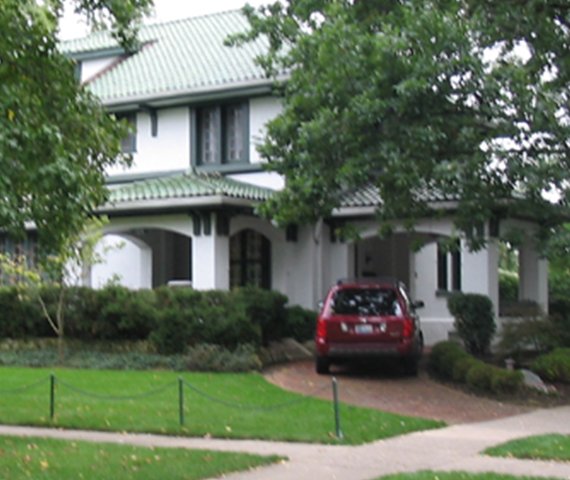

With award-winning schools and city services, Oakwood is one of the most desirable communities in the Miami Valley. Because the residents of Oakwood have done an exceptional job of conserving our neighborhood, it is one of the best-preserved early 20th-century communities in Ohio.
On the national level, Oakwood has a collection of outstanding residential housing eligible for the National Register of Historic Places. In addition, Oakwood has one National Register Historic District (the Schantz Park Historic District), the individually listed Long-Romspert House, Wright Memorial Public Library, and Hawthorn Hill, a National Historic Landmark.
Oakwood’s history is closely connected to many social and political movements of the early 20th century, making it a local example of a national trend. Its development is deeply rooted in the modernization of the American community. Oakwood was shaped by the ideology of the Progressive and City Beautiful movements from the late 1890s through the 1930s -- movements that sought to improve urban living through science. Advocates of those movements sought healthier living, through more green space and architectural styles that were modern and void of Victorian clutter.
The influences of those ideas can be seen on every street in Oakwood as one notices the prevalence of many architectural styles including Italian Renaissance, Tudor, Colonial Revival, Spanish Eclectic, Mission, Prairie and Craftsman. Those styles were inspired by both pure interpretations of European styles and the innovative designs of modern American architecture.
Most Oakwood homes contain features that reflect the philosophical and architectural principles of the modernization of the American home -- cleaner gas fireplaces, large bathrooms with built-in bathtubs, sinks and kitchens with new appliances including gas ranges, porcelain sinks and built-in breakfast nooks. All these luxuries were signs of a modern, progressive home. It is not uncommon to hear that historic buildings, on the average, are built better than modern buildings. For in the past, America spent a higher percentage of its GNP (Gross National Product) and more dollars per square foot on buildings than it does now.
But individual homes are only one part of the total environment. The municipal design of Oakwood also reflects elements of early 20th-century urban planning. Those elements include our public buildings, built in both the popular Tudor Revival style and Colonial Revival style; the use of boulevards, including Far Hills, Shafor, Triangle and Forrer avenues that feature median landscaping; and the development of community parks.
Just as America itself, Oakwood has been shaped over time by significant political and social movements that combined past influences with new technologies. Preserving Oakwood’s history and character is important to the community. The citizens of Oakwood take pride in owning a historic home and preserving the community’s built environment.
We at the Oakwood Historical Society can assist you in learning more about our community, as we are an excellent resource for learning more about the history, architecture, and the people of Oakwood. Contact us to learn more.
 Walter Shafor's Home: 106 Spirea (back in the day)
Walter Shafor's Home: 106 Spirea (back in the day)

Homes in the City of Oakwood from the 1910s and 1920s and how they appear today. Black and White images are from the 1910s and 1920s. Color images are from 2006. The one sketch image is from the late 1800s. This is a PowerPoint slideshow that will open in a new window. Press the ESC button to quit and return to this website.
Read about Oakwood's 1940s "time capsule" home, at 413 Wiltshire, and the Costas family who lived there until 2012. 106 Spirea in the early 21st Century
106 Spirea in the early 21st Century